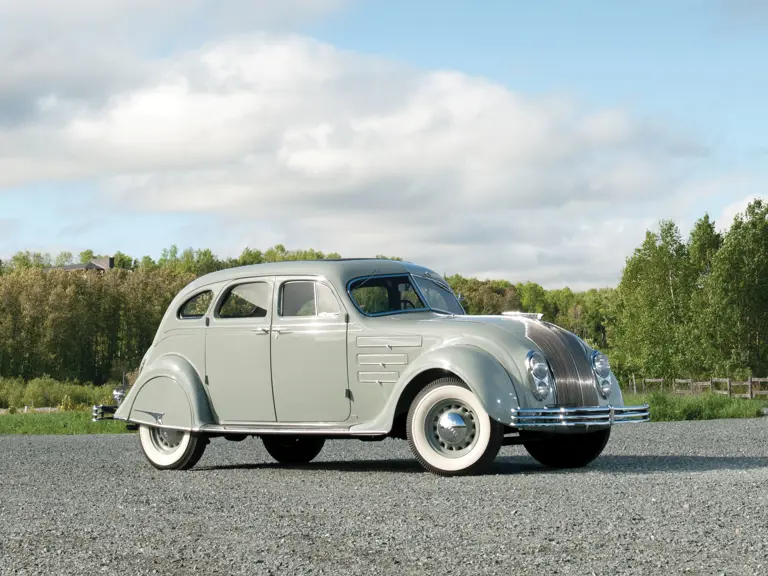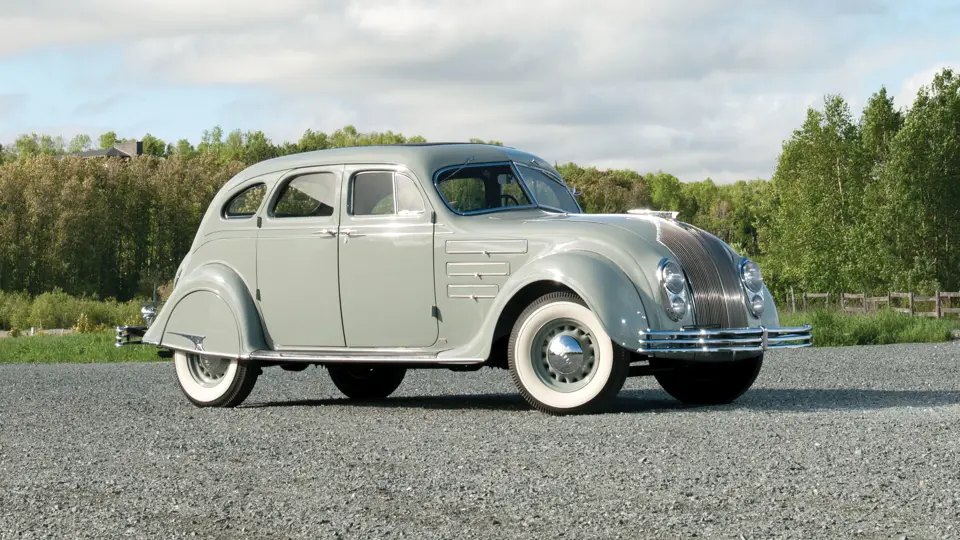 | Auburn, Indiana
| Auburn, Indiana
Chrysler’s Airflow represented the best and worst of times. It was a brilliant design that had the promise of technology, yet it suffered the heartbreak of the Depression.
Credit for the design is rightly given to engineer Carl Breer, who, with Owen Skelton and Fred Zeder, was one of Walter Chrysler’s “Three Musketeers.” The trio, who worked at Studebaker during World War I, was recruited by Chrysler in 1920 to design a new car for Willys, which was then under Chrysler’s direction. Through a series of complex events, that car eventually became Billy Durant’s Flint, but the Musketeers stayed with Chrysler for the rest of their working lives and were responsible for all of Chrysler Corporation’s much vaunted engineering until the 1950s.
The Airflow was Breer’s implementation of “form follows function,” as it had a wind-tunnel-tuned shape built on a semi-unitary “truss bridge” chassis that was based on aircraft principles. The engine was pushed forward, over the front axle, which allowed both seats to be situated within the wheelbase. The Airflow was roomy inside and extremely comfortable.
It was launched to great fanfare in 1934. Chrysler had four series on different wheelbases; they were all eights and three of them were Imperials. DeSoto had a single line of six-cylinder Airflows. Although the press was generally positive in its reaction and enamored with the technology, the public was not. The blunt shape just didn’t arouse enthusiasm. Barely 11,000 Chrysler Airflows were sold, against 25,000 conventional six-cylinder models that had fortunately been continued.
This stunning Model CU is fully restored to new condition and is powered by the original 299-cubic inch flathead straight-eight engine, which offers 122 horsepower, a three-speed manual floor-shift transmission with overdrive, and four-wheel hydraulic brakes. It has been finished in Willow Green, which is complemented by wide whitewall tires, and it is equipped with full instrumentation, the ultra-rare radio, a heater, and a rear-mounted spare tire.
The 1934 models are Airflows in their purest form, as they were created before styling touch-ups were initiated to make them more “conventional looking.” Thus, it has the blunt nose and Art Deco chrome-trimmed seats that are not present on later models. Although the 1934 CU Sedan was the most popular Airflow model, only 7,226 were built, making this car part of a small constituency. Because of their rarity, and due to the fact that Airflow collectors are a dedicated group, excellent examples seldom appear on the market. This car represents an uncommon opportunity.





